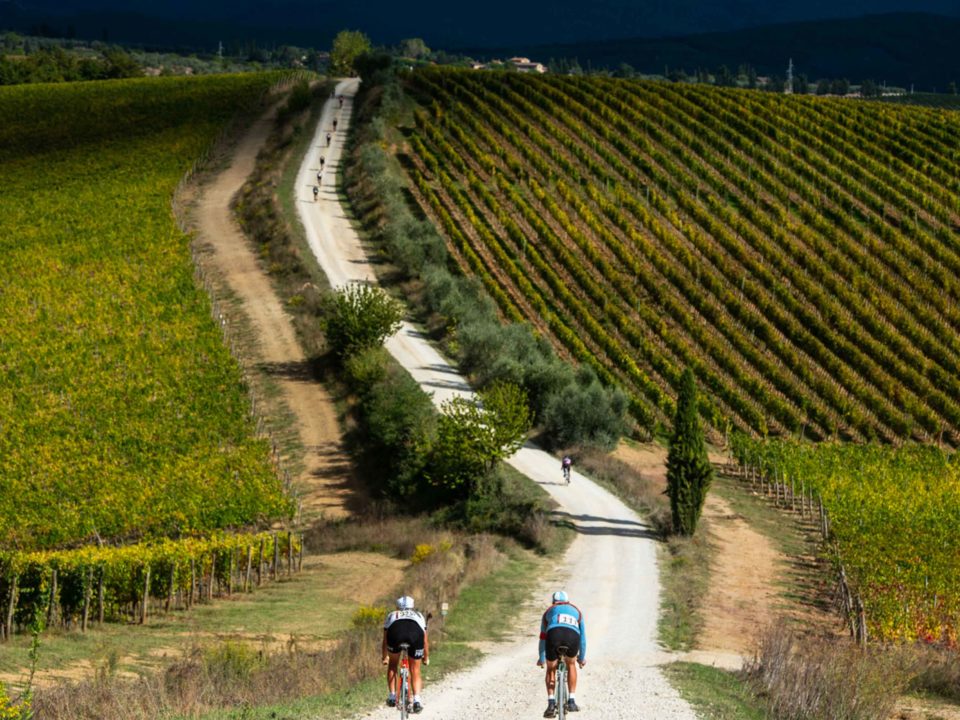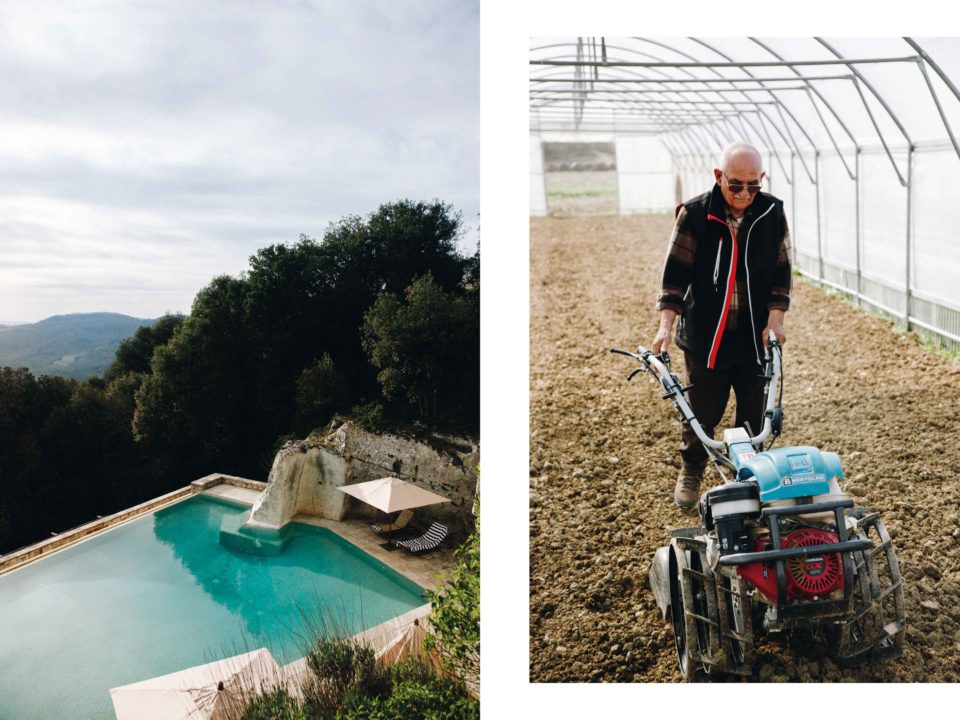The feel of winsome nostalgia you get from a stay in a nigh-on empty hotel, when a stillness has settled in after guests have dwindled off along with the searing hot weather, has rarely been so eloquently evoked as in Wes Anderson’s The Grand Budapest Hotel. And for good reason. In lieu of a dishevelled wedding cake of a stay in Zubrowka, Anderson penned the epic tale while hunkered down off-season in Monteverdi, a restored, Unesco-protected borgo in Tuscany that sits high above the Val d’Orcia, which has ‘muse’ stamped into its bedrock.
Anderson may well be on to a good thing – if summer is Tuscany’s blockbuster season, then late autumn is its indie darling, appreciated by fewer but with remarkably arresting visuals and the makings of a buen retiro marked by local characters and undersung tropes. Say October’s Eroica bike ride, where enthusiasts don flat caps, goggles and vintage sweaters to cycle various scenic routes in Chianti, or perhaps Montalcino’s Feast of the Thrush, a colourful, costumed archery competition: both scenes imbued with enough endearing quirkiness to easily slot into an Anderson film.
And, there’s more filmic fodder come October, when the Francigena film festival kicks off in the Colle di Val d’Elsa, an exquisite historic commune in Siena. Recognising that Tuscany’s scenery already has a fairly lengthy IMDB page, the festival’s named after the regional stretch of the pilgrimage route to Rome along Via Francigena, and, fittingly, its roster of short films focuses on journeys both physical and philosophical.
But if that’s not your bag, you can experience full-throated bursts (of song, that is) in Florence’s opera halls; with the city at its quietest, the locals dress up for warbling tenors in gilded theatres. And, in the last week of October, the Florence Biennale – this year exploring sexual revolution and gender identity – brings a radical 21st-century edge to the city’s po-faced statues and Renaissance masterworks. So, while the weather may be unreliable, the region’s cultural clout remains steadfast.
Rest assured, the timeless theatrics that have played out over the region remain a powerful watch too: when the Val d’Orcia and the patchwork hills, cypress-lined roads and criss-crossed vines turn flame-orange it’s a sight to stir even the most procrastinatory creative. Plus, this is the season where discrete ingredients of Tuscan cuisine get their due through harvest-spurred sagre festivals (introduced to a wider audience through Under the Tuscan Sun). The most famous is perhaps the Mostra Mercato Nazionale del Tartufo Bianco, when Italy’s white-gold fungi is brought front and centre, but you can also celebrate the ‘good chestnut’ at Sagra delle Castagne e del Marron Buono or pig out on boar meat at Sagra del Cinghiale.
As for where to stay, Monteverdi – in a tragic twist – is actually shuttered till January 2022, but there are plenty of actually-rather-luxurious garrets, with capital-V views, wait-for-the-crop vineyards, and rightfully lauded restaurants. Say, Castello di Vicarello, a 900-year-old hilltop castle in Maremma where cellars are stacked with its own award-winning wines; or Borgo Pignano, where resident gamekeeper, head farmer and all-round character Enzo will enlighten you as to how a hotel can live in perfect harmony with the land. And, if it’s off-season cinematic glamour you need, or eureka moments in a space that’s been Midas-tapped by old-school A-listers, then check-in at Castello di Casole, where famed film director Luchino Visconti entertained the biggest of names. So, take a punt on a late-season stay and prepare to be inspired.
Seeking a muse? Explore our full collection of stirring stays in Tuscany…




